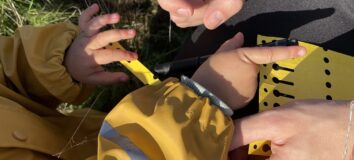Last year we started the blogging with a strong article about plans for 2020 without suspecting how the year will turn out. Looking back now, the article seems ambitious, optimistic, full of good vibes only 🙂
This year we would like to have a slightly different approach by reviewing what we have learned from the pandemic year of 2020.
#1 Being agile on every level of the business
When the whole trouble caused by the virus started in Romania back in March, companies needed to react fast. Fast as possible to re-organize the workload, the teams, and the daily operations. This was the most needed moment to be agile to keep all of us safe but make sure that the work goes on. In one “Sprint” we needed to go home, establish a work environment at home, assure infrastructure for every single employee, set up tools and channels for unlimited online communication.
Luckily, we were already working in agile with Scrum teams having regular ceremonies, so reflecting all this experience on an organizational level was much tangible for us.
![]()
#2 Accepting the remote work
This was always a hard nut to crack. We have clear memories of discussions where some of us (including the author of this article…) were reluctant regarding the remote work. It seemed unreliable to have team members outside of the horizon during the working hours. It always felt that the developers would be distracted by things happening at home. We needed to learn to have maximum self-discipline when it came to working from home. No pajamas, no laundries, no nothing during the day, pretend that you are in the office, and you can not do laundry.
#3 Technologies kept us moving on
This is definitely true for the entire globe. More than 1 billion people switched to remote work during the year, regardless of their type of business, the field of activity, or experience, they needed to catch up with the latest technologies for conference calls, online meeting rooms, chat tools, planning tools and many more. Teachers needed to start learning how to speak to a screen instead of in front of a classroom. For people working in IT, this was relatively easy as we were already into these tools. We were hiring new colleagues all year, but onboarding them remotely was and still is way too “digital”.
Regardless of how hard this is for many of you, software and digital products kept us going on.

#4 Optimizing the virtual work
There is no more possibility to poke your colleague sitting next to you for asking something. Every tiny human interaction with our colleagues requires either a Skype call or a Google meeting. This is the hardest part of our work to keep organizing online meetings for every interaction. If we look at the numbers from our time tracker system, it’s obvious that we spend more time on meetings and discussions than ever before. We are not the only ones experiencing this, Google’s CEO, Sundar Pichai leaked out an internal memo back in December where he proposed to have “no meetings week” to avoid the burnout of their employees. Microsoft is experiencing the same phenomenon since working from home.
This is the lesson learned from the last year that further optimization is required to decrease the number of daily meetings. It sounds almost as crazy like the zero-email initiative started 10 years ago by Atos Origin.
#5 Focus on a dual strategy
In 2021 IT leaders will continue focusing on a dual strategy: one is about to have a safe return to the office, the other is related to optimize virtual engagement.
It’s still uncertain to foreseen the exact timing of returning to the office. Regardless of when will be the moment when we can all start working from the office again, we plan to do this incrementally, and we’ll continue to still support the remote work.
To optimize the virtual engagement will require us to adapt to new ways of human interactions. Last year we minimized (literally had zero) in-person meetings with our customers; every single meeting was moved to the online sphere. Working from different locations has become a significant part of many business environments. This means a new era of interaction methods and the decline of a few traditional communication tools.
Related Articles
What is TEDx? Due to its popularity in recent years, we think everybody knows what a TED Talk is and what it is about. To do a short recap, TED…
Planting trees for a better tomorrow For many decades, tree removal has been identified as one of the primary causes of nature loss and environmental harm. Over 20 million…
Interview with our Head of Design, László KÁLMÁN, about the latest design trends, perspectives, popular colors, and fonts. We were curious about what will be trendy this year in terms…


